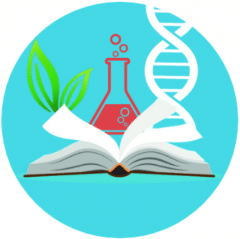| Sexual Reproduction |
| 1. |
In general terms, explain how the basic plant life cycle with alternation of generations is modified in angiosperms. |
| 2. |
List four floral parts in order from outside to inside a flower. |
| 3. |
From a diagram of an idealized flower, correctly label the following structures and describe the function of each structure:
a. sepals
b. petals
c. stamen (filament and anther)
d. carpel (style, ovary, ovule, and stigma) |
| 4. |
Distinguish between:
a. complete and incomplete flowers
b. bisexual and unisexual flowers
c. monoecious and dioecious plant species |
| 5. |
Explain by which generation, structure, and process spores are produced. |
| 6. |
Explain by which generation, structure, and process gametes are produced. |
| 7. |
Name the structures that represent the male and female gametophytes of flowering plants. |
| 8. |
Describe the development of an embryo sac and explain the fate of each of its cells. |
| 9. |
Explain how pollen can be transferred between flowers. |
| 10. |
Distinguish between pollination and fertilization. |
| 11. |
Describe mechanisms that prevent self-pollination. |
| 12. |
Outline the process of double fertilization. Explain the adaptive advantage of double fertilization in angiosperms. |
| 13. |
Explain how fertilization in animals is similar to that in plants. |
| 14. |
Describe the fate of the ovule and ovary after double fertilization. Note where major nutrients are stored as the embryo develops. |
| 15. |
Describe the development and function of the endosperm. Distinguish between liquid endosperm and solid endosperm. |
| 16. |
Describe the development of a plant embryo from the first mitotic division to the embryonic plant with rudimentary organs. |
| 17. |
From a diagram, identify the following structures of a seed and state a function for each:
a. seed coat
b. proembryo
c. suspensor
d. hypocotyls
e. radicle
f. epicotyl
g. plumule
h. endosperm
i. cotyledons
j. shoot apex |
| 18. |
Explain how a monocot and dicot seed differ. |
| 19. |
Explain how fruit forms and ripens. |
| 20. |
Distinguish among simple, aggregate, and multiple fruit. Give an example of each type of fruit. |
| 21. |
Explain how selective breeding by humans has changed fruits. |
| 22. |
Explain how seed dormancy can be advantageous to a plant. Describe some conditions for breaking dormancy. |
| 23. |
Describe the process of germination in a garden bean. |
|
|
|
Asexual Reproduction |
| 24. |
Describe the natural mechanisms of vegetative reproduction in plants, including fragmentation and apomixis. |
| 25. |
Explain the advantages and disadvantages of reproducing sexually and asexually. |
| 26. |
Explain various methods that horticulturalists use to propagate plants from cuttings. |
| 27. |
Explain how the technique of plant tissue culture can be used to clone and genetically engineer plants. |
| 28. |
Describe the process of protoplast fusion and its potential agricultural impact. |
|
|
|
Plant Biotechnology |
| 29. |
Compare traditional plant-breeding techniques and genetic engineering, noting similarities and differences. |
| 30. |
Describe two transgenic crops. |
| 31. |
Describe some of the biological arguments for and against genetically modified crops. |
|
|
